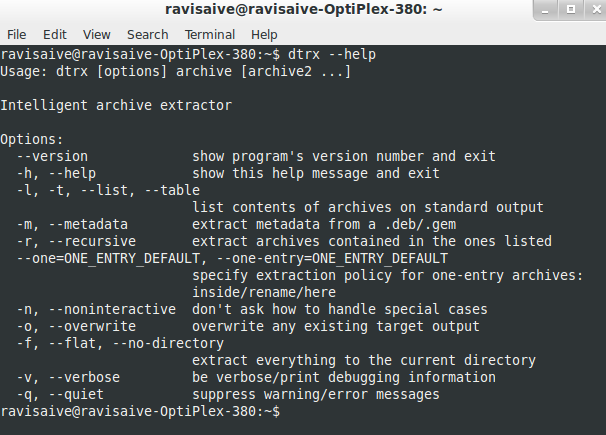

Archive has been created with supplied command. In the results below, we can see that the archive has been created successfully. f is creating an archive with the name 'logs_' as supplied in the command above. v is providing details of the files that have been archived. Let's break down this command and look into each flag. To compress them, we'll use tar like this: tar -czvf logs_ * We have a list of the following files which we'll compress with tar. We use this flag when files need to be extracted from an archive. Providing the -v flag shows details of the files compressed.Īrchive file names are mapped using the -f flag. When we specify this flag, it means that archive will be created using gzip compression. We use this flag whenever we need to create a new archive. The tar command uses the following flags to customize the command input: Flag The syntax is shown below: tar destinationFileName sourceFileName We use the tar command to compress and expand files from the command line.

#Tar zip folder how to#
In this post, we'll look at how to compress files with the tar command in Linux, along with some examples of tar in action. You can also compress older and rarely used files and save them for future use which helps you conserve disk space. And compressed files are also easier to copy to remote servers. It helps you reduce file size and share files efficiently. Ubiq makes it easy to visualize data in minutes, and monitor in real-time dashboards.File compression is an essential utility across all platforms. Hopefully, the above tutorial will help you create tarball as well as extract tar.gz files in Linux. Here’s the command to extract files to a specific directory (e.g /home/ubuntu/data) $ tar -xvf /path/to/dir $ tar -xvf /home/ubuntu/data In the above command, we use -x option for extraction, instead of using -c for compression. Tar command will list the contents of your tar.gz file that is being extracted.

Here’s the command to extract tar.gz file $ tar -xvf Tar command will list contents of your directory that is being archived.īonus Read : How to List all files in a Directory in Linux Here’s the tar command to create tar.gz file from a directory (e.g /home/ubuntu/product/) $ tar -cvzf /home/ubuntu/product/ How to create a tar.gz file from a directory That is why you see 2 file extensions in a tarball.īonus Read : How to Find Directory in Linux Here’s the command to create tar.gz file (e.g sales_) from a single file (e.g /home/ubuntu/sales_data.txt) $ tar -cvzf sales_ /home/ubuntu/sales_data.txtįirst tar command will create the archive. Let us look at a few examples to create tar.gz file v – for verbose, meaning it will display the progress in terminalīonus Read : How to Create Zip and Unzip File in Linux.In the above command we mention the following options In the above command, the tar command is followed by options -cvzf, the filename of final tar.gz file to be created, followed by one or more paths to files/directories Here’s the syntax $ tar -cvzf /path/to/file We will use the tar command to create tar.gz file in Linux.

Here’s how to create tar.gz file in Linux. They are very useful in data archival and compression. The tar command in Linux allows you to compress files and directories into tar.gz files, also known as tarballs.


 0 kommentar(er)
0 kommentar(er)
